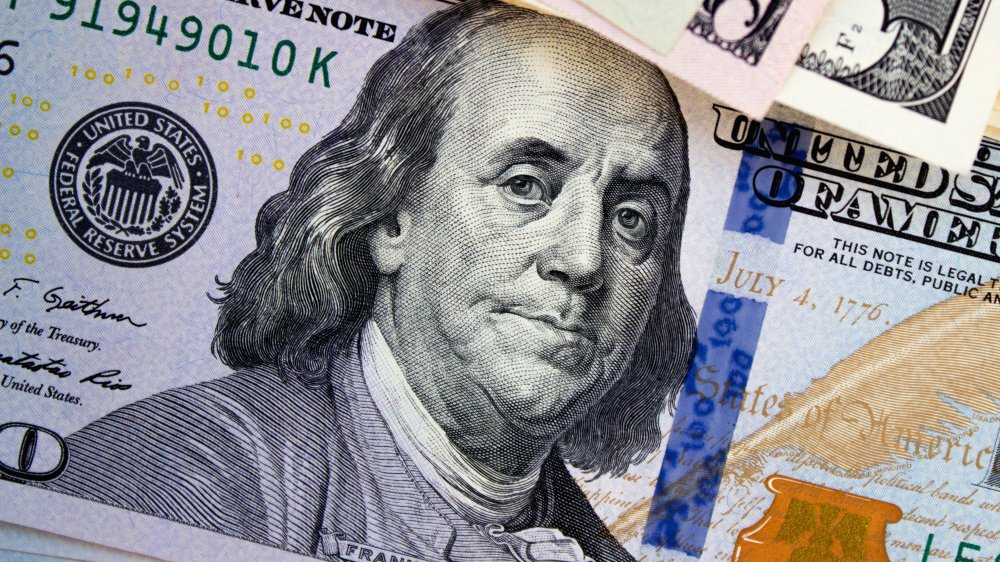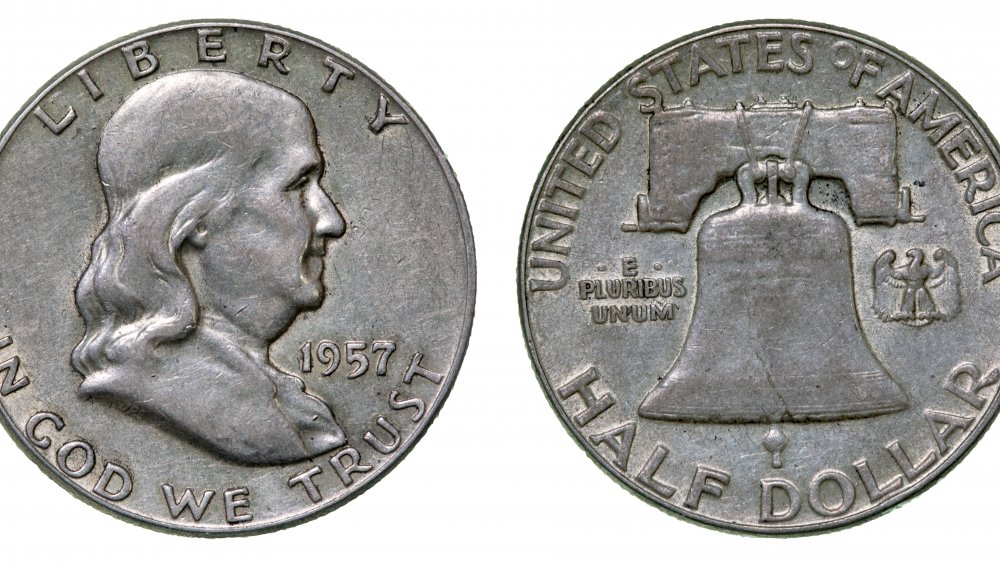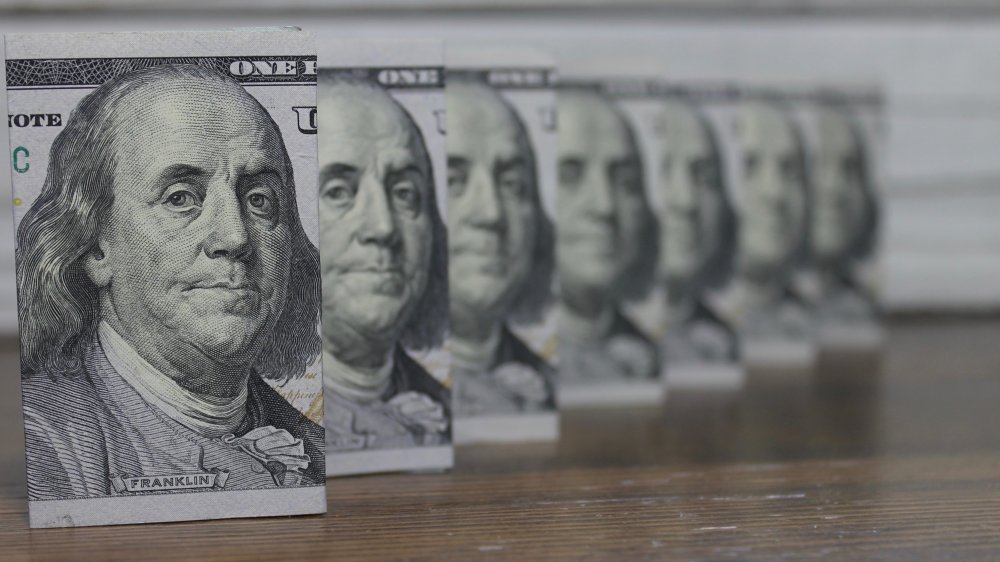Why Is Benjamin Franklin On The $100 Bill?
It's all about the Benjamins. Also (for the sake of consistency) the Georges, the Thomases, the Abrahams, the Alexanders, the Andrews, and the Ulysseses. At one time, it was also about the Williams, the Grovers, the Jameses, the Salmons, and the Woodrows. But not anymore.
The currency of the United States is often criticized as, well, boring, particularly when compared with more visually ornate and colorful folding money of other nations. U.S. dollars of various denominations also suffer from (or are blessed with, depending on, literally, the size of your wallet) consistency of size. One bill will look very much like another at first glance — size, color scheme, paper stock, and so on.
Closer examination reveals that those self-same denominations are graced by differentiation by mug, the fact of the historical figure assigned to that particular piece of lucre, filthy or otherwise. So far, not one of the faces on U.S. greenbacks is that of a woman, though there have been movements afoot to rectify that situation. According to the web site of the U.S. Department of the Treasury, the decision about whose face goes on what rests with the Secretary of the Treasury, working in conjunction with the Bureau of Engraving and Printing — barring, of course, a direct Act of Congress.
But also on half a buck
Regulations forbid currency featuring the portrait of anyone living. The site explains that portraits on currency should be of "deceased persons whose places in history the American people know well." Their records don't include specific information as to why one face is where it is, instead of another. That includes Benjamin Franklin, who started appearing on the $100 bill — the largest denomination in circulation — in 1914, according to Your Dictionary. However, it's not hard to draw our own conclusions.
Your Dictionary calls him, possibly "the most important founding father in our nation," citing his "pivotal" work in forging the Declaration of Independence, securing support from France during the Revolution, and quite simply, paving the way for many of the values we now consider American. His influence is so undeniable that his picture also graced the American half-dollar from 1948-1963, and he's one of only two non-presidents on American bills, along with Alexander Hamilton. But those aren't the only reasons he qualifies.
To B. Frank
Obviously, the "deceased American" part is one hurdle easily crossed by Benjamin Franklin, who died in 1790, according to Biography.com. But further, he is simply a marvel of a human being, and a shining example of American ingenuity. Franklin was one of those people you couldn't make up, because no one would believe it. His very existence defines "polymath" — inventor (bifocals, the Franklin stove, the lightning rod), writer (Poor Richard's Almanac), Founding Father (contributed to both the Declaration of Independence and the Constitution), and diplomat (negotiated the Treaty of Paris, resolving the American Revolution). He also incorporated America's first subscription library, in Philadelphia, in 1731, published newspapers, and gave to us all one-liner aphorisms still quoted today, like that annoying one about "early to bed and early to rise" and "He that lies down with dogs, shall rise up with fleas." With such an impressive resume, it's no wonder he is literally the face of success.


